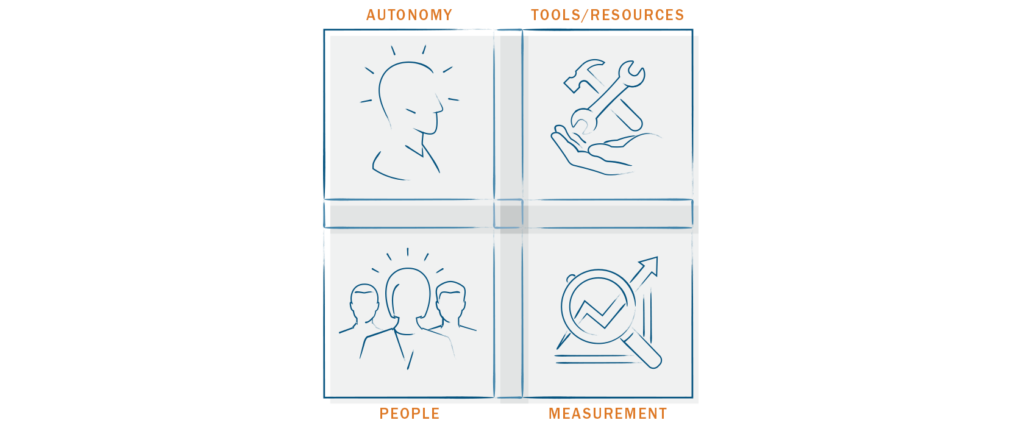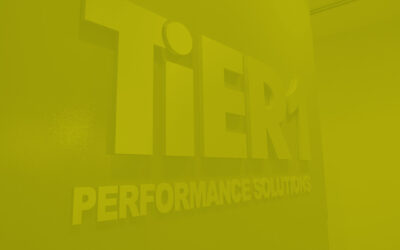Want Onboarding That Drives New Hire Productivity?
Whether you are hiring 500 people or just five, you probably have an onboarding program (and for good reason). Great onboarding creates higher engagement, increases productivity, improves retention, and impacts the connection to purpose, people, and values.
As organizations work to improve their onboarding experiences for new hires, I’ve seen this scenario played out many times. Maybe you’ve seen (or experienced) it too?
It’s Emily’s first day at a new job, and she’s being onboarded. Her manager has scheduled back-to-back meetings from 9-5 for Emily to attend (with an hour break for lunch). In the first meeting, Emily’s given a 100-page binder full of information about the company to use as a reference tool throughout onboarding. Emily gets a tour of the office before lunch from her onboarding “buddy,” an employee who’s been struggling with his performance, talking about how he doesn’t believe in the company. At the end of her first day, Emily’s manager gives her a compliance checklist she needs to complete in her first week, on top of four more days of back-to-back meetings. Emily goes home tired and a little unsure what she needs to do to be successful in her onboarding.
Sounds like a pretty standard onboarding experience, right? To take their onboarding to the next level, Emily’s organization recently added an update to their onboarding program: a web app that makes finding and sharing information within the company much easier for new hires.
Problem solved—maybe.
There are lots of trends in onboarding and trendy upgrades you can make, ranging from a new app to an onboarding session held at the beach. It can be tempting to improve existing onboarding efforts by adding something trendy. But just because something is trendy doesn’t mean it’s the right solution. Trendy onboarding doesn’t guarantee increased productivity (and it’s not always the most cost-effective choice).
So how do you create a great onboarding program that enables your people to be productive sooner? Whether you opt for the trend or the traditional, you can empower your newcomers to be productive sooner by incorporating these four factors in your onboarding:

Enabling autonomy, providing the right tools and resources, facilitating connections with the right people, and measuring progress through the onboarding experience enable you to see higher productivity sooner, higher performing talent, and better retention among your newcomers.
Give them autonomy.
Emily’s onboarding experience was highly structured (back-to-back meetings all day is a lot of meetings). This can leave newcomers disoriented and overwhelmed, which isn’t a great first impression. On the flip side, autonomy, or the freedom of external control, enables newcomers to take charge of their transition and manage their time.
More autonomy often equals faster growth and higher retention. A study conducted at Cornell University found that, compared to businesses using command control management, businesses that gave employees autonomy grew four times faster and experienced only one-third of the turnover. (Sign me up for that solution!)
What does autonomy in onboarding look like? It accomplishes the following:
- Providing clear and simple guardrails, so your new folks don’t get stuck or make big mistakes early.
- Divvying up information into personalized goals (instead of large tasks) that enable newcomers to manage their transition.
- Giving newcomers choices, not processes, in determining their schedule and their progress through onboarding
Autonomy increases engagement by allowing newcomers to manage and take charge of their onboarding experience. Compare this to onboarding that focuses on compliance and asks new hires to simply check off boxes on a list. When new employees are given autonomy, they can become active participants in their onboarding, instead of passive contributors. (And active participation typically means higher engagement overall.)
Provide the right tools and resources.
New hires receive plenty of tools. Sometimes these tools are overwhelming, too trendy, or not the right fit for their onboarding journey. (Remember Emily’s 100-page binder?)
What do the right onboarding tools look like? They are designed to:
- Be user-friendly, easy to find and navigate, and enjoyable to use, creating a great user experience.
- Provide powerful indicators of progress, giving newcomers insight into their onboarding journey.
- Engage new hires in their early learning experiences, teaching them about the company, the team, and their role.
When giving your newcomers tools and resources, don’t be afraid to provide access to a list of prioritized tools, empowering them to use their autonomy to pick the right tools for them (and explore some that might be a better fit down the road).
Connect newcomers with great people.
You want your new hires to feel welcomed and accepted starting Day 1 so that they create lasting relationships beyond their manager. But too often, organizations connect their newcomers with the wrong people, including low performers and non-impact leaders.
Creating strong social connections for your newcomers is important for retention. As humans, the more social connections we have, the harder it is to leave those connections. (See this research article on turnover and retention from The Academy of Management Annals to understand why that is.) Plus, the more people that your new hires can leverage during their transition, the better you can enable their autonomy.
Here are some ways to help your people feel welcomed and accepted well beyond their first day:
- Provide networking opportunities to connect newcomers with your existing team.
- Facilitate connections with the right people, including high performers, key leaders, and other newcomers.
- Ask current employees or recent newcomers to create a list of the top five people to get to know. (They may have a different perspective.) Provide these recommendations and a framework for your employees to make these connections during their first few weeks or months.
Measure their performance.
Emily’s onboarding experience lacked concrete, specific metrics that would define what success looks like and guide her efforts. To help your newcomers successfully manage their progress, empower them to measure their performance starting Day 1 using meaningful metrics based on autonomy, tools and resources, and people.
Here are some metric examples:
- Autonomy: progress towards onboarding goals
- Tools: proficiency of tools being used
- People: quantity and quality of interactions with others
Keep in mind that you are the expert on which performance metrics make sense in your organizational culture and business context. Once you figure out the right performance metrics for measuring a new hire’s progress, be sure to communicate those expectations to your newcomer often.
Empower your new hire productivity.
There’s no silver bullet for the perfect new hire experience. The best solution is finding the right fit for your company and culture and what serves your new hires well. No matter what format you choose, you can improve the newcomer experience by giving them greater autonomy, providing effective tools and resources, connecting them with great people, and helping them measure their performance.
This allows your new hires to own their progress, do their best work, and stay with your organization longer so Emily’s story can become the exception, not the trend.
Grant loves chatting about productivity hacks. If you’d like to connect with him, give us a call at (859) 415-1000 or drop us a line in the form at the bottom of this page.




